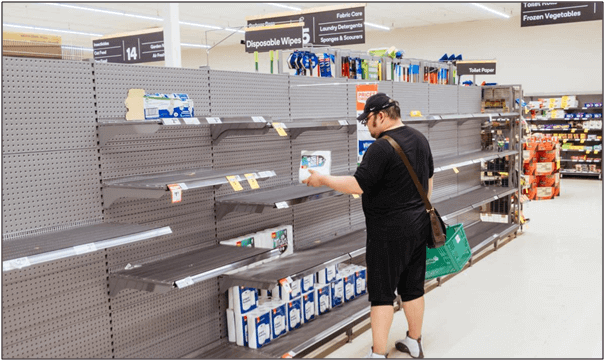The impact of covid-19 has been largely felt across different sectors and not evenly spread. In fact the effect has been heterogeneous. The Covid-19 pandemic has infected millions of people around the globe and spread with alarming speed and bringing economic activity to a near-standstill.
As a consequence the world of cargo has suffered losses due to tighter regulation and border closures to halt the spread caused economy downturn due to blank sailings, grounded planes, containers piling up on quays and congestion and demurrage. It had serious impact on Logistics transportation. In this article we will discuss the implication of COVID-19 on transportation, which is part of Logistics.
Table of Contents
Logistics Transportation
Transportation is the key element of the logistics chain, it occupies nearly one-third of the amount in the logistics cost and takes a crucial part in the manipulation of logistic. Without transportation no movement of goods or freight can happen. Transportation is required in the whole production process, from manufacturing to delivery to the final consumer and returns.
The Demand for Air Freight
Demand is picking as China and most of the countries in Europe start to recover from the pandemic. Fifty percent of world’s cargo for air freight actually is transported in the belly of passenger planes. Some of the major airlines have started limited travel, and due to limited capacity companies are scrambling to get the products in, causing the freight rates to double.
Due to surge of demand many passenger airlines are providing freight services adapting the passenger aircraft to transport medical supplies such as PPE, medicines, baby wipes, health care systems such as ventilator. This trend may continue for a while until all travel restrictions are eased. With the grounding of many airplanes and provide patient access to medication and treatment, Pharmaceutical Industry, with some innovation, can use available temperature controlled containers, which can hold temperature for 120+ hrs or so. The two diagrams below show the passenger airplane that was used as a freight carrier.


The Change in Transportation Demand Pattern
As Air freight transportation becomes more expensive, to save cost suppliers will plan for using Premium ocean transport and certain boats that are smaller and faster and lesser days transit time (10days) than normal vessel does (21days). Prior to COVID-19 pandemic, transportation demand pattern was more seasonal such as CNY, Christmas, Olympic games etc. Post COVID-19, demand has become unpredictable.

As the cure for virus is ongoing, it is difficult to predicate the exact resurgence of the economy. To mitigate the effect of virus, most country governments advice their citizen, staff of companies and corporate to WFH(Work From Home). Ordering online, Video conferencing, become the new norm, essentially disrupting the supply chain especially the trucking industry. Many companies are holding trucks and this long tail trucks were redeployed to supply to restaurants or retailers such as food and beverages industry etc to ease the financial burden of under-utilization.Using technology trucking industry can reallocate capacity across the country in the right corridor, at the right spot, on the right lanes to reduce empty miles.
Supply Chain Disruption
It is predicted that container transport may drop by 30% and will remain weak for the rest of the year. The shipping industry is facing formidable challenges for reduced available capacity, equipment coupled with congestion in specific ports with related surcharges and blank sailing. As a result of which this disruption due to COVID-19 would reshape the shipping industry, especially the effect of COVID-19 on global supply chain network. Companies should start looking at restructuring their supply chain, such as reduce the risk of dependence on particular regions for supply, hence shipping industry should be prepared for this structural change.
Shipping industry should enable itself to implement digitization and innovation within the industry. This enables good collaboration amongst the different stakeholders. Investment in intelligent freight technologies should become a priority, to effectively manage efficiency, capacity and cash to ensure a comfortable position in the post COVID-19 period.

Recovery by Mode of Transport
Recovery for Less-than-truckload (LTL) and full-truckload (FTL) will be faster than other mode of transports because both shipping carry a heavy proportion of fast-to-return agriculture, food, and services and benefit from growth in e-commerce. FTL’s freight mix also contains 16% of fast-to-return basic commodities. Air cargo will take few years to recover because the two largest shipper for light machinery and electronics will be slower to return. Rail transport will take more than four years to return, due to high exposure to slower-to-return coal, oil and gas. All mode of transport are facing downturn and the recovery will start may be next year.
The full content is only visible to SIPMM members
Already a member? Please Login to continue reading.

